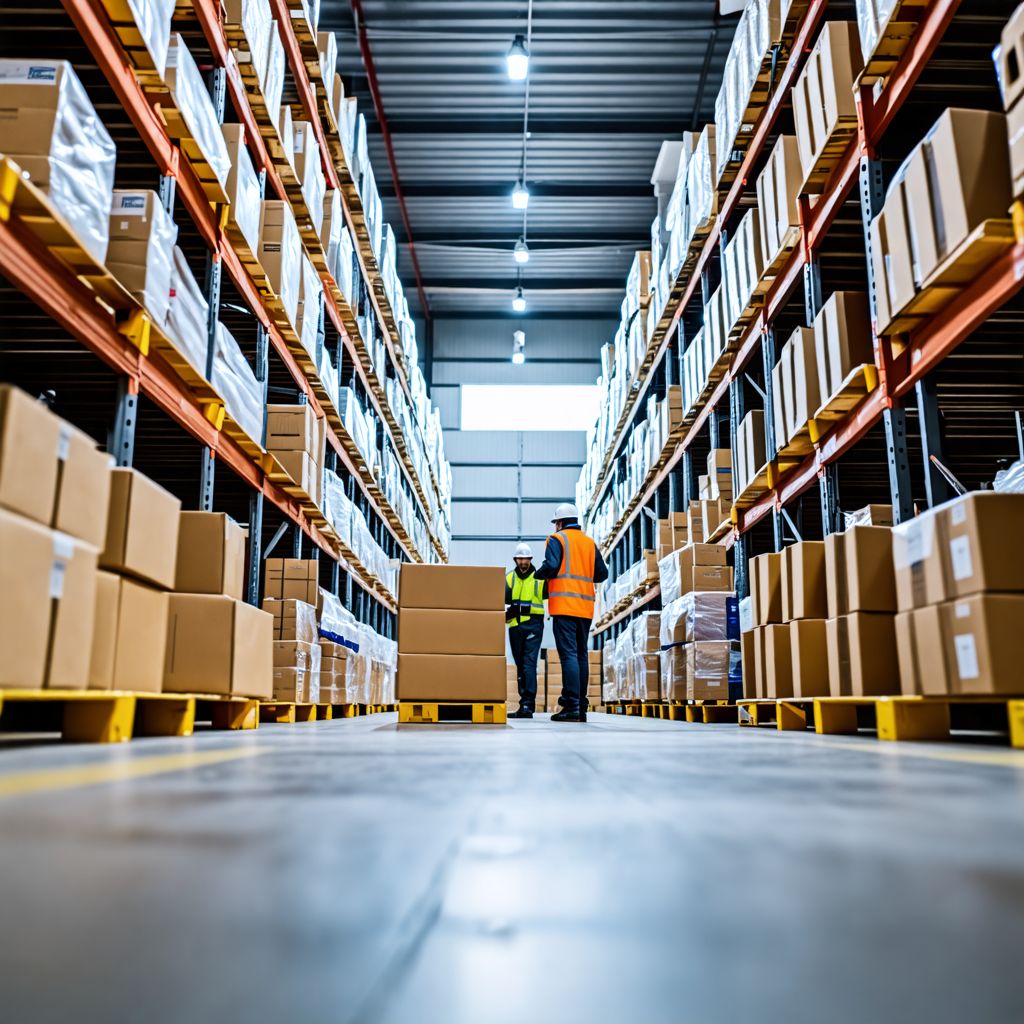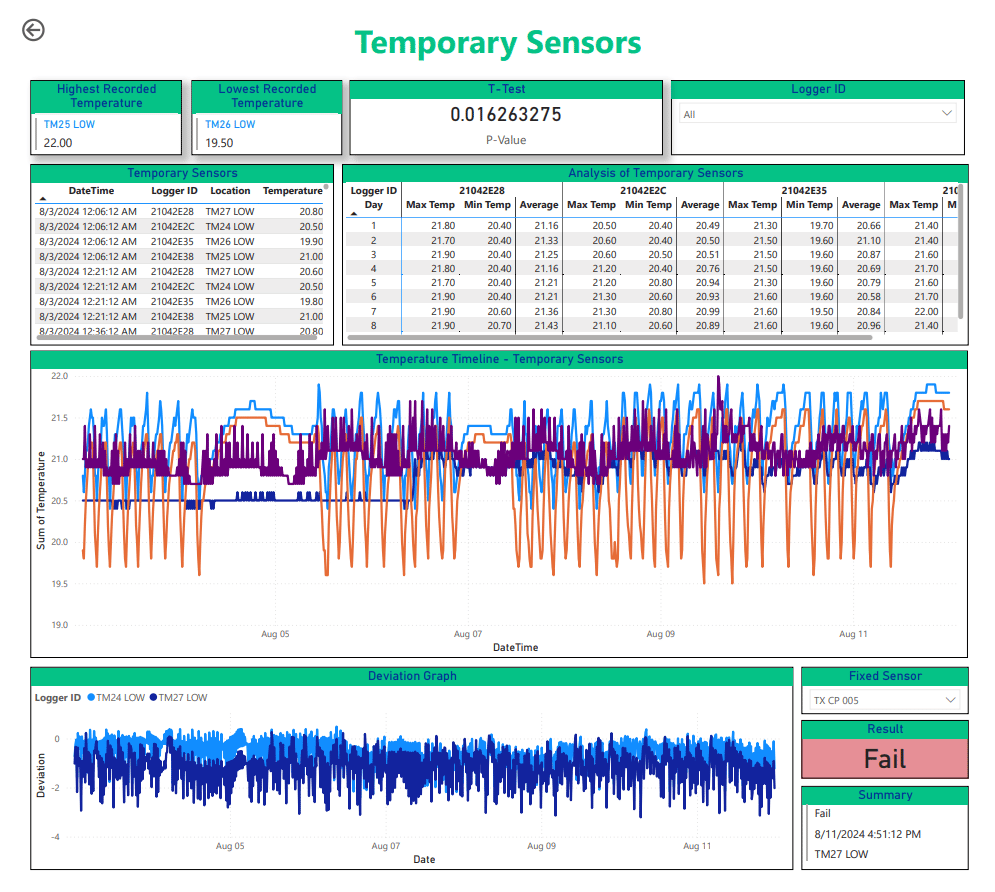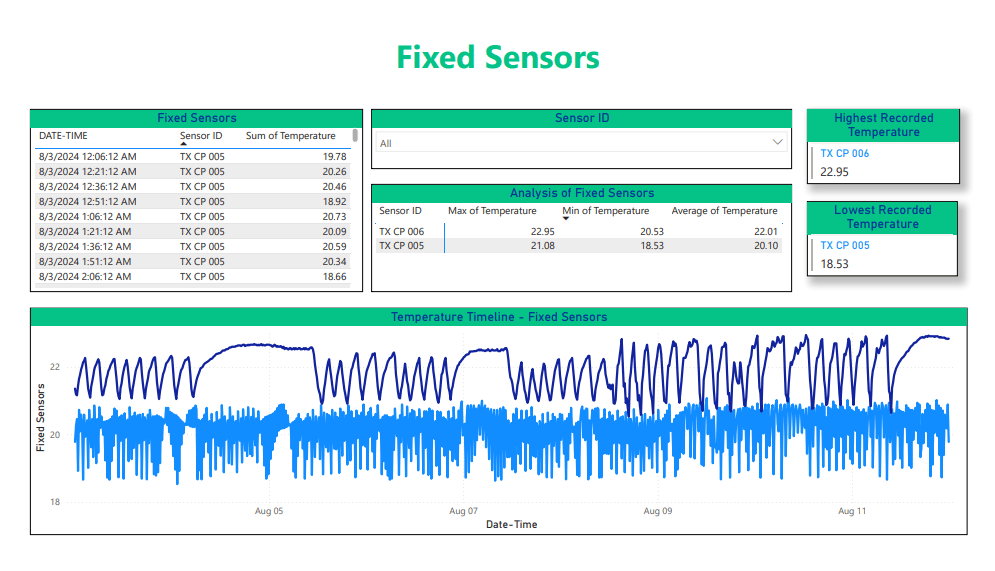
Credits: Stability.AI
Table of Contents
In this exclusive edition of xLM's ContinuousTV Weekly Newsletter, we are excited to present Continuous Temperature Mapping(cTM), our newest service tailored to transform temperature mapping within the MedTech, Biotech, and Pharma sectors. As experts in GxP validation, we recognize the vital significance of upholding regulatory standards while guaranteeing precise and dependable data. Through cTM, we amalgamate automation, data handling, and machine learning (ML) to enhance temperature mapping procedures, offering a smooth journey from data gathering to visualization. | Guide to Temperature Mapping for Pharmaceutical Storage (More) | WHO Technical Report (More).
1.0 The Challenge of Temperature Mapping
In the highly regulated environments of pharmaceutical and biotech industries, maintaining precise control over temperature and humidity is crucial for preserving the quality of medical products. Traditionally, companies have depended on manual methods for collecting and analyzing data, often resorting to tools like Excel to handle extensive temperature data from diverse sensors located throughout warehouse facilities. While this approach is familiar, it is labor-intensive, prone to errors, and often inadequate for efficiently managing large datasets. Moreover, adhering to regulatory standards such as 21 CFR Part 11 necessitates meticulous data management practices that manual processes struggle to fulfill.
Acknowledging these obstacles, we have introduced cTM to streamline the entire temperature mapping process, spanning from data collection to dashboard presentation. This automation not only improves accuracy and compliance but also significantly reduces the time and effort needed to oversee and analyze temperature data. cTM's service is especially valuable because the dashboards we offer are validated outputs that adhere to stringent industry regulations. They are crafted to be confidently utilized during FDA proceedings, guaranteeing precise data representation and compliance with regulatory mandates.
2.0 Understanding the cTM Dashboards
The cTM service revolves around two primary dashboards: the Temporary Sensors Dashboard and the Fixed Sensors Dashboard. Each dashboard has a unique function, and when combined, they offer a holistic perspective on warehouse conditions.
2.1. Temporary Sensors Dashboard
The Temporary Sensors Dashboard showcases information collected by calibrated NFC or RF data loggers positioned strategically throughout the warehouse to monitor temperature and humidity levels at designated intervals. This dashboard showcases a range of essential features:

Fig 1.0 cTM Temporary Sensor Dashboard
This dashboard functions as a robust tool for monitoring environmental conditions and ensuring adherence to regulatory standards. Each container and graph is crafted to emphasize key performance indicators (KPIs) crucial for upholding optimal storage conditions and operational efficiency:
Highest and Lowest Recorded Temperatures: Users can promptly identify the maximum and minimum temperatures recorded by any temporary sensor, along with the specific location of these readings. This feature is essential for verifying that all areas within the warehouse maintain temperature levels within the required range, thus averting potential product deterioration.
Detailed Data Table: The data table offers a detailed view of temperature readings, organized by datetime, logger ID, location, and recorded temperature. This level of specificity enables precise monitoring and analysis of environmental conditions across the warehouse, facilitating the identification of particular areas or times when temperatures may have strayed from the norm.
Analysis of Sensor Data: This segment provides day-wise summaries of the minimum, maximum, and average temperatures for all temporary sensors. Through analyzing these metrics, users can uncover patterns and trends that may signal systemic issues or areas necessitating additional monitoring.
Timeline Visualization: The visual representation of temperature data over time empowers users to observe trends and evaluate whether all readings fall within specified action and alert thresholds. This visual aid is especially beneficial for promptly detecting anomalies or periods of instability that may warrant further scrutiny.
Deviation Graph: The deviation graph compares data from fixed and temporary sensors to ensure uniformity across various monitoring points. It flags any discrepancies exceeding 2°C lasting over two hours between fixed and temporary sensors, yielding a clear pass/fail outcome. This KPI is fundamental for validating sensor precision and guaranteeing that all sensors furnish dependable data meeting validation criteria.
Comparison of Loggers: A T-test was conducted to evaluate the precision of fixed and temporary dataloggers. The null hypothesis posited no notable distinction in temperature readings between the two types of loggers, whereas the alternative hypothesis suggested a variance in their measurements. Rejection of the null hypothesis occurs when the P-value is below 0.05, indicating that there is no disparity in the data obtained from temporary and fixed dataloggers. This implies that the accuracy of temporary and fixed dataloggers is equivalent.
2.2. Fixed Sensors Dashboard
The Fixed Sensors Dashboard is dedicated to data collected from sensors that are permanently installed in the warehouse. While it shares similarities with the Temporary Sensors Dashboard, it is specifically designed to meet the distinct needs of fixed sensors.

Fig 2.0 cTM Fixed Sensors Dashboard
Each container or graph is designed to highlight key performance indicators (KPIs) essential for maintaining optimal storage conditions and operational efficiency:
Highest and Lowest Recorded Temperatures: This feature, akin to the temporary sensor's dashboard, offers swift access to the maximum and minimum temperatures registered by each fixed sensor.
Data Summary: A comprehensive table presents all readings sorted by datetime and sensor ID, enabling users to have a clear snapshot of the environmental conditions tracked by fixed sensors.
Temperature Analysis: An elaborate breakdown of day-to-day temperature readings, displaying the minimum, maximum, and average values for each sensor. This analysis ensures the proper functioning of all fixed sensors and their coverage of the designated areas.
Timeline and Graphical Analysis: Visual aids aid in evaluating whether fixed sensors are effectively monitoring temperatures throughout the warehouse, pinpointing any deviations or anomalies that require attention.
2.3. Sensor Mapping Dashboard
The Sensor Mapping Dashboard is tailored to compare data gathered from fixed and temporary sensors, offering a detailed analysis of environmental conditions in storage or warehouse areas. It incorporates proximity-based sensor grouping to improve data interpretation, guaranteeing accurate monitoring of temperature and humidity.
Every container or graph in the dashboard is crafted to address essential operational requirements:

Fig 3.0 cTM Sensor Mapping Dashboard
Temperature Graph - By Grouping: This feature enables users to compare temperature discrepancies between fixed sensors and their corresponding temporary sensors. By selecting one or more fixed sensors, the dashboard automatically groups the nearest temporary sensors based on predefined proximity rules (For example 20 feet lateral, 5 feet vertical). This visual representation enhances monitoring efficiency, promptly identifying any differences between sensor groups.
Deviation Graph: This graph specifically focuses on the variations in data gathered from both sensor categories, offering a real-time insight into temperature or humidity inconsistencies. It empowers users to verify that all sensors, whether fixed or temporary, are functioning within acceptable parameters.
Data Automation: A backend data engine streamlines sensor grouping and data processing. Once a fixed sensor is chosen, all relevant temporary sensors are seamlessly linked, and their data is retrieved and correlated automatically. The platform ensures precise and dependable data analysis by updating the status as either Pass or Fail.
Result Status and Summary: The results panel delivers a concise overview of the system's overall health, employing a straightforward pass/fail system. In instances of sensor malfunctions, the Summary Tab records the precise time, sensor ID, and the nature of the issue, expediting the troubleshooting process.
3.0 The Power of Data Automation and Machine Learning
cTM specializes in automating and streamlining the temperature mapping process using advanced data labeling and machine learning techniques. Let's delve into how these technologies are leveraged to ensure data accuracy and compliance with regulations.
3.1 Data Labeling and Transformation
Data transformation involves converting raw data into a format that is easier to read and analyze. At cTM, we utilize Python to automate this process, ensuring that all data from fixed and temporary sensors is correctly formatted and standardized. This crucial first step is essential for creating a unified dataset that smoothly integrates with our dashboards.
3.2 Data Pre-processing
Data pre-processing plays a crucial role in preparing data for machine learning models. It involves standardizing the data to ensure uniformity across all variables, a key factor for precise model training. In cTM, we utilize various normalization methods like min-max scaling and z-score normalization, tailored to the specific data requirements.
Furthermore, we implement feature engineering to derive insightful features from raw data. This process may involve generating lag features to capture time-related dependencies, breaking down time series data into trend and seasonality components, or conducting autocorrelation analysis to detect recurring patterns. These engineered features are then utilized to enhance the accuracy of our machine learning models in forecasting and analyzing temperature fluctuations within the warehouse.
3.3 Automation Using Machine Learning
Machine learning plays a pivotal role in optimizing the analysis and reporting processes within cTM. By feeding our pre-processed data into predictive models, we can automate a variety of crucial tasks:
Predictive Analytics: Machine learning models possess the ability to predict temperature trends and identify potential deviations in advance. This allows for proactive measures to uphold all areas within acceptable temperature ranges.
Anomaly Detection: Leveraging algorithms such as Isolation Forests and Local Outlier Factor, we can automatically identify anomalies in the data that could indicate sensor malfunctions or unexpected environmental changes. This approach ensures the accuracy of temperature mapping and facilitates swift resolution of any issues.
Automated Reporting: Upon completing data analysis, our system promptly generates detailed reports and dashboards. This eliminates the need for manual report generation and ensures stakeholders have continuous access to the most up-to-date information.
4.0 FDA Compliance and Validation
In alignment with our commitment to quality and regulatory compliance, our dashboards are intricately designed to meet the stringent FDA standards for monitoring storage facility environments. Each key performance indicator (KPI) and data visualization tool is meticulously calibrated to ensure the accuracy and reliability of the data, thus enhancing validation efforts. By continuously monitoring temperature trends and irregularities, we ensure compliance with relevant regulations, thereby upholding the integrity of your products. Our dashboards not only establish a robust compliance structure but also act as a powerful tool for operational excellence, promoting ongoing improvement in your operational processes.
5.0 Conclusion
cTM revolutionizes temperature mapping for the medical technology, biotechnology, and pharmaceutical sectors. By incorporating state-of-the-art data labeling, transformation, and machine learning techniques, we have crafted a solution that not only aligns with the stringent regulatory requirements of these industries but also provides unparalleled insights into environmental conditions within warehouse facilities. With cTM, rest assured that your products are stored under ideal conditions, boosting both compliance and operational efficiency.
Our automation of the entire end-to-end temperature mapping process with cTM represents a significant advancement. From data logging to dashboard visualization, each step is fine-tuned to streamline operations, save time, and reduce errors.


